Okay, so you must be curious about the language used in Hawaii. If anyone asks you, “What do you think Hawaiian people speak in?” You’ll probably answer —“Uh… Hawaiian”. You would also be somewhat correct, but not precisely.
Hawaii has a pretty huge linguistic landscape, and they speak even more languages than you could think of. It’s helpful to know what’s happening with the languages in Hawaii if you’re planning a trip or are just interested in the state’s rather unusual linguistic landscape.
So, let’s get on which some cool info on what do they speak Hawaii!
Geography of Hawaii
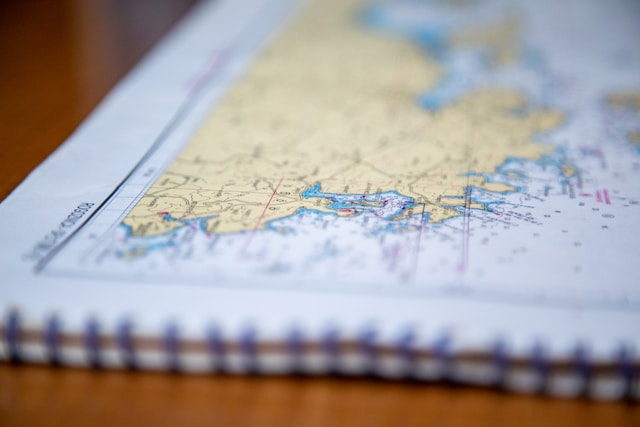
Before we get to know the languages spoken in Hawaii, it is important that we know about its geographical location, which has influenced the way people speak here.
So, many of us might know that Hawaii is a group of islands. But how many islands have you ever wondered that? Hawaii consists of eight main islands—Niihau, Oahu, Kauai, Lanai, Maui, Molokai, Kahoolawe, and the Big Island.
Back in the day, explorer James Cook called it the “Sandwich Islands” after the 4th Earl of Sandwich, but by the 1840s, it took on the name we know today, inspired by its largest island.
Hawaii is part of Polynesia and the only U.S. state that isn’t physically connected to North America. It’s about more than 1,800 miles from the closest continent!
Fun fact – The Hawaiian Islands are actually the tops of a giant mountain range underwater known as the Hawaiian-Emperor Seamount Chain. It was created by volcanic eruptions over millions of years, which is rather crazy to think about—Hawaii is essentially the tip of a giant volcano poking out of the ocean floor!
History of the Hawaiian Language
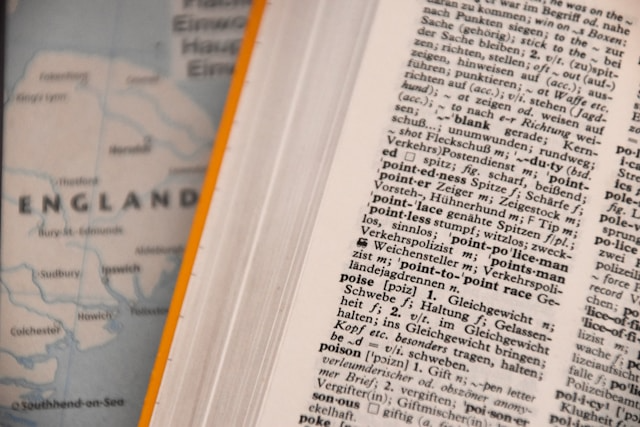
Hawaiian (‘Ōlelo Hawaiʻi) is the indigenous language of Hawaii, and at one point, it was on the verge of extinction. While in the early days this was the most spoken language, soon it lost its charm. In the late 1800s, it was even prohibited in schools, and gradually, Hawaiian language use in everyday life declined more and more. By the early 1980s, there were fewer than 50 children able to speak it fluently.
It’s then that the community intervened. Teachers and local speakers opened up immersion schools in which children were taught Hawaiian by elders, and gradually but steadily, the language began to resurface.
Today, the Hawaiian language is everywhere—on street signs, in government papers, and even at universities at which students may take degrees in the language. It’s even one of the two official languages of Hawaii.
Although this Hawaiian language has made great strides, it’s still considered critically endangered, which means the battle to keep it alive continues. But due to the dedication of the people and the love towards the language, it’s use is better than it’s been in decades—and getting stronger day by day.
Languages Spoken In Hawaii
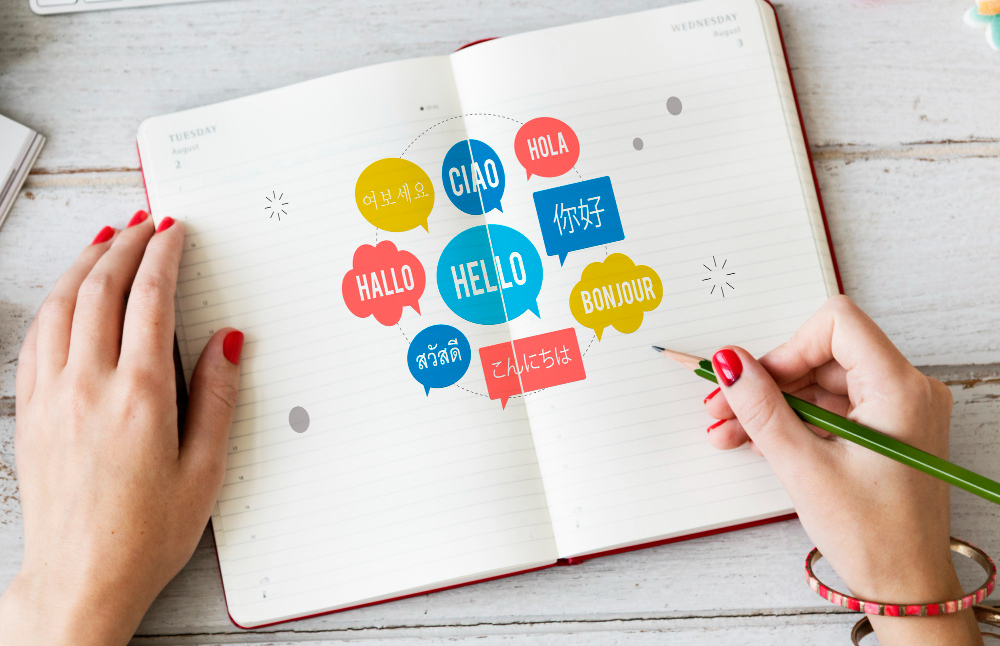
Since Native Hawaiians comprise only approximately 10% of the population of the state, Hawaii is now a melting pot of cultures. The most populous group is Asian (38%), followed by White/Caucasian (25%) and mixed-race (24%). This diversity was one of the factors that led the government to change school curriculum to English, which eventually caused the Hawaiian language to dwindle.
Now, let’s learn about the different languages spoken in Hawaii!
1- Hawaiian Language
Hawaiian is an Austronesian language belonging to the Polynesian language group, closely related to Tongan and Samoan. It was traditionally referred to as ‘Ōlelo Hawaiʻi, or “Language of Hawaii,” and was spoken by Kānaka ʻŌiwi—the Native Hawaiian people whose ancestors first inhabited the islands.
The term “Hawaiian” is commonly used to refer to both the people and the language, but Native Hawaiians call themselves Kamaʻāina, or “child of the land.” The language itself has a unique sound, with pronunciations that don’t occur in English.
Though Hawaiian was declared officially in the state constitution in 1978, American authorities had already prohibited it from being used in schools and government, and its speakers numbered drastically. Currently, only some 2,000 people are estimated to speak it as a native language, which is why it is deemed a “critically endangered language” by UNESCO.
Hawaiian Pidgin
Pidgin is a combination of Creole and English, making it a Creole language. This is essentially a linguistic mashup that developed into its own dialect. In Hawaii, about 700,000 people use it on a daily basis, making it extremely popular. Pidgin is still not an official language, despite being spoken by many people.
Creole English
The distinctive linguistic fusion known as Hawaiian Creole, or Pidgin, is largely influenced by English, Chinese, Portuguese, Hawaiian, Indonesian, and Japanese. As immigrants from various nations came to Hawaii, it evolved organically over time, establishing a means of communication between individuals from various backgrounds.
2- English
In Hawaii, English is the most widely spoken language; you can hear it in everyday conversations as well as in businesses and schools. Following the U.S. occupation of the islands, English emerged as the predominant language, and by 2021, roughly 74.2% of Hawaii’s population spoke it as their first language.
Nevertheless, Hawaiian English differs slightly from mainland English. With regional terms, pronunciations, and even some distinct spellings, it has its own special twists. Despite being the primary language in the government, media, and schools, Hawaiian and Pidgin continue to be widely used in daily life.
3- Other Languages Spoken in Hawaii
Hawaii’s lengthy history of immigration has resulted in a diverse range of cultures and languages. The diverse community you see today was created by waves of immigrants who arrived in the 1900s, each bringing their own languages, traditions, and customs.
When you visit Hawaii, you’ll come across a variety of languages from around the globe. In addition to Asian languages like Chinese, Japanese, and Filipino, European languages like Portuguese and Spanish are also spoken.
Naturally, the native language of the islands, Hawaiian, is still spoken in some places, particularly in those with strong cultural traditions. And because many of these communities are still thriving in Hawaii, the most common languages you’ll get to hear are:
Korean
Due to the huge number of immigrants in the early 1900s, Koreans are well-represented in Hawaii. Originally, many Koreans came to work on sugarcane plantations, and they eventually established a flourishing community.
Around 17,000 people, or 5% of the population, speak Korean in Hawaii today. With Korean being the most popular foreign language program at the University of Hawaii, interest in the language has only increased. This is probably due to the popularity of K-pop and K-dramas around the world.
Japanese
Due to historical immigration and cultural ties, there is a significant Japanese population in Hawaii. Approximately 16% of Hawaiians today have Japanese ancestry, with the first Japanese immigrants arriving in 1868.
Japanese is spoken by about 45,000 people (14% of the population). Even Hawaiian Pidgin will have Japanese words! For Japanese families, schools like Rainbow Gakuen help preserve the language, which is still vital for tourism.
Spanish
Since more than 9,000 Spanish laborers came to Hawaii in the early 1900s to work on sugarcane plantations, Spanish has been a part of the state’s history. Spanish is still a part of Hawaii’s cultural heritage, even though many later relocated to the mainland, particularly California. Approximately 25,000 people in Hawaii speak Spanish today, which is 7.8% of the population.
Chinese (Mandarin and Cantonese)
Since Chinese immigrants came to Hawaii in the middle of the 1800s to work on plantations, Chinese languages, such as Mandarin and Cantonese, have been widely spoken there. Approximately 8,000 people (approximately 2%) speak Cantonese, while 17,000 people (approximately 5% of the population) speak a Chinese dialect, excluding Cantonese.
Programs at the University of Hawaii at Manoa and schools like Hoo Cho Chinese School contribute to the preservation of the language and culture. Chinese languages continue to play a significant role in Hawaii’s diverse culture, despite English being the primary language.
Fun fact: You’ll find a good population Chinese Chinese-speaking Hawaiian people in Honolulu’s Chinatown.
Filipino
Approximately 25% of Hawaii’s population is Filipino, making them the state’s second-largest ethnic group after European Americans. The majority of the 340,000 Filipinos who identify as Filipino reside on Oahu, and many of them have Northern Luzon ancestry, particularly Ilocano ancestry.
Along with English, the community speaks a variety of other languages, such as Tagalog, Ilocano, Visayan, and other dialects of the Philippines. The Filipino population in Hawaii is still expanding due to high birth rates and continuous immigration, contributing to the state’s rich cultural diversity.
Thai
There are about 5,500 people of Thai descent in Hawaii, making up a small but noticeable Thai community. With roughly 34% of the state’s Thai population living in urban areas, Honolulu is home to the largest concentration of Thai people.
The Thai language and culture contribute to Hawaii’s rich diversity, even though they are not as numerous as other groups like the Japanese or Filipinos.
Samoan
In Hawaii, 12,800 people, or about 4% of the total population, speak Samoan. Samoans have contributed to the development of Hawaii’s cultural scene as members of the larger Native Hawaiian and Pacific Islander (NHPI) community.
Even though more people speak Hawaiian and English, Samoan is still a significant part of their heritage and is kept alive through cultural customs and community gatherings.
Tagalog
Roughly 18% of the state’s population speaks Tagalog, making it the second most spoken language in Hawaii after English. Tagalog is a significant part of Hawaii’s cultural landscape because of the state’s sizable Filipino-American population.
Filipino, the national language of the Philippines, is based on this Austronesian language, which is related to Hawaiian and Māori.
Ilocano
About 54,000 people in Hawaii speak Ilocano. It is a vital part of the Filipino community in Hawaii and originates from the northern parts of Luzon in the Philippines.
Since 1980, the number of Ilocano speakers in Hawaii has almost tripled, indicating the language’s increasing popularity. In order to maintain the language, educational institutions such as the University of Hawaii provide Ilocano courses.
Vietnamese
Vietnamese is used by a smaller but prominent group in Hawaii. The majority of Vietnamese residents reside in urban settings such as Honolulu, particularly in areas such as Chinatown and Lower Makiki.
While the community is smaller compared to other Asian groups, Vietnamese culture and language still add to Hawaii’s rich diversity, and the population continues to grow along with other Asian American and Pacific Islander communities in the state.
Most Common Phrases Used in Hawaii
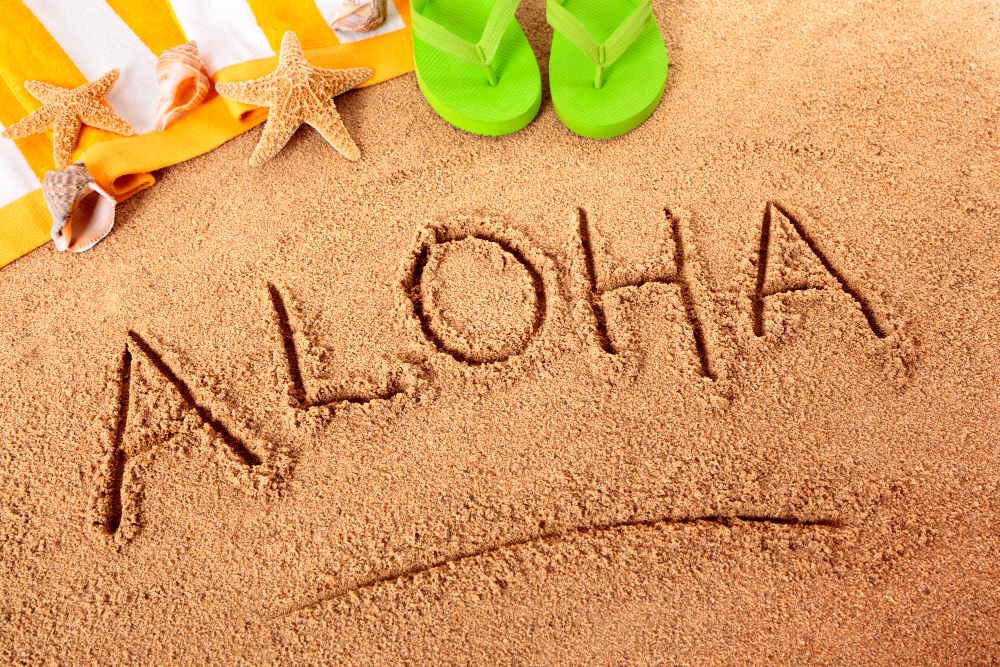
Even if you don’t plan on becoming fluent in Hawaiian, learning a few words will make your experience in Hawaii way more fun. Here are some must-know basics:
Popular Hawaiian Phrases & Words
- Aloha = Hello, goodbye, love, and a whole way of life
- Mahalo = Thank you
- Pau = Finished or done
- ʻOhana = Family
- Keiki = Child
- Makai = Towards the ocean
- Mauka = Towards the mountains
- Hale = House
- Pono = Righteousness, balance
- Aloha kakahiaka = Good morning
- Aloha ‘auinalā = Good afternoon
- Aloha ahiahi = Good evening.
- Kama‘aina = Local residents of Hawaii
Popular Hawaiian Pidgin Phrases
- Da Kine: That thing (or pretty much anything, depending on the context!)
- Grinds (or Grindz): Food (as in, “Let’s go get grindz!”)
- Shoots: A casual way to say okay
- Talk Story: To have a conversation between friends
- Howzit?: How is it going, or how are you?
- Broke da mouth: To describe something that’s very delicious
- Lolo: Silly or crazy
These phrases are not just conversation words, but expressions that also capture the essence of the Hawaiian culture. Having even a bit of its knowledge and applying it during your vacation can enhance your experience of traveling to Hawaii and help you have meaningful interactions with locals!
Fun Facts About the Hawaiian Language
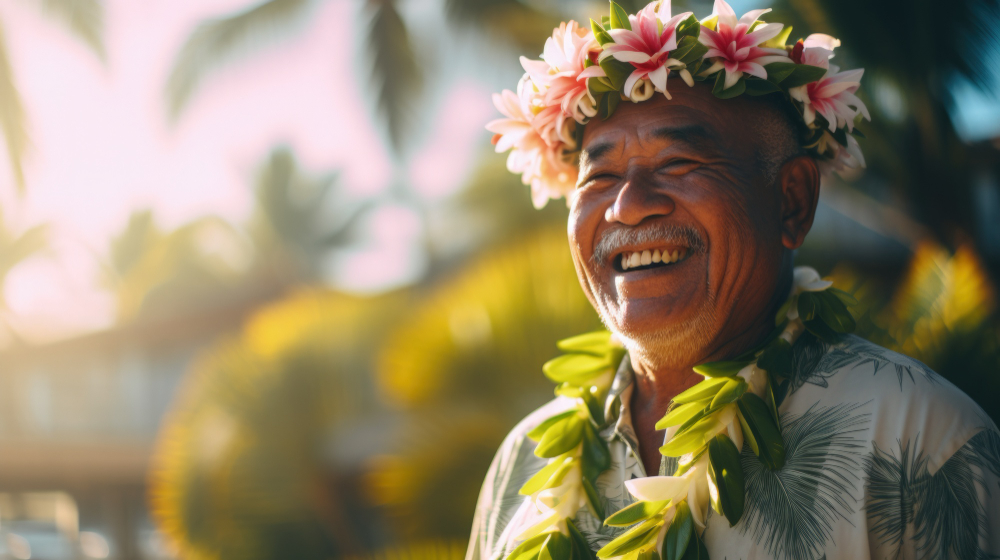
#1 – There are two official languages of Hawai’i— English and ‘Ōlelo Hawai’i.
#2 – Only in 1978 was Hawaiian titled as the official state language by the U.S. government after almost a century of it being banned.
#3 – Hawaiian has historically been the first language spoken by Native Hawaiians. The most widely spoken languages in Hawaii today are English, Hawaiian, and Pidgin, though the latter is currently being revived.
#4 – There’s no information on the age of the Hawaiian language (it’s that old!). Although the exact age of the Hawaiian language is unknown, experts concur that it descended from other Polynesian languages. Before missionaries developed a written form to translate the Bible in the 1820s, it was exclusively spoken.
#5 – Hawaiian remains the dominant language on the privately owned island of Niʻihau. About 200 people live there, and it’s the only place where you can find fluent Hawaiian speakers. However, tourists are not allowed there at all.
#6 – Hawaiian is a Polynesian language closely related to Tongan and Samoan, but they aren’t fully interchangeable. While speakers might understand some basic words, meanings can differ, like aloha, which exists in all Polynesian languages but holds a deeper cultural significance in Hawaiian.
#7 – Hawai‘i Creole, or Pidgin, is widely spoken across the islands, though it’s not an official language. First listed on the U.S. Census in 2015, estimates suggest anywhere from 1,600 to 700,000 people use it. It originated in the 1830s on sugar plantations, blending influences from Japanese, Portuguese, English, and other languages to help workers communicate.
#8 – There are more than 130 languages found in Hawaii. The indigenous people are also multilingual and, commonly, English, Hawaiian, and Pidgin, and often use Pidgin when it comes to casual conversation.
#9 – The Hawaiian alphabet has 13 letters: a, e, i, o, u, h, k, l, m, n, p, w, and ‘ (ʻokina). The ʻokina is a glottal stop that can alter word meaning, such as pau (done) vs. paʻu (ink). Although the kahakō (¯) is not a letter, it is used to indicate a longer vowel sound.
#10 – The Hawaiian alphabet has five vowels (each with long and short pronunciations) and eight consonants. Originally, though, it had just seven consonants. Interestingly, the world’s smallest alphabet belongs to the Rotokas language!
So, What Should You Speak in Hawaii?

Don’t worry, English is perfectly acceptable in Hawaii, as not everyone speaks Hawaiian. Locals may appreciate the effort if you include a few Hawaiian words or Pidgin phrases, but don’t go overboard. When locals say it, it sounds natural, but when others say it, it can sound a little forced.
Learning Hawaiian is a great way to connect with the culture if you’re really into it. If you want to learn more than just “aloha” and “mahalo,” there are apps, online courses, and even community classes!
Final Thoughts
Hawaii is indeed a melting pot of languages, where multiple languages are woven into the fabric of life. With English, Hawaiian, Pidgin, and influences from all over the world, the way people talk here is as unique as the islands themselves.
Where English is the first choice of many, Hawaiian is on the rise, and Pidgin continues to be an integral aspect of local identity. Regardless of which language you communicate in, taking a bit of effort to know and respect Hawaii’s language history goes a great way towards being able to relate to the islands’ people and culture.
Frequently Asked Questions
Is Hawaiian spoken today?
Yes, although it is a language that is considered endangered. It is maintained through efforts such as immersion schools and cultural programs.
Why do so many languages exist in Hawaii?
Hawaii has a deep immigrant history with laborers from China, Japan, the Philippines, Korea, and Portugal who came in the 19th and 20th centuries with their languages and cultures intact.
Why was Hawaiian nearly lost?
Following the coup against the Hawaiian Kingdom in 1893, Hawaiian was prohibited in schools, and it became rare to find native speakers. Attempts at revival were made in the 1970s.
